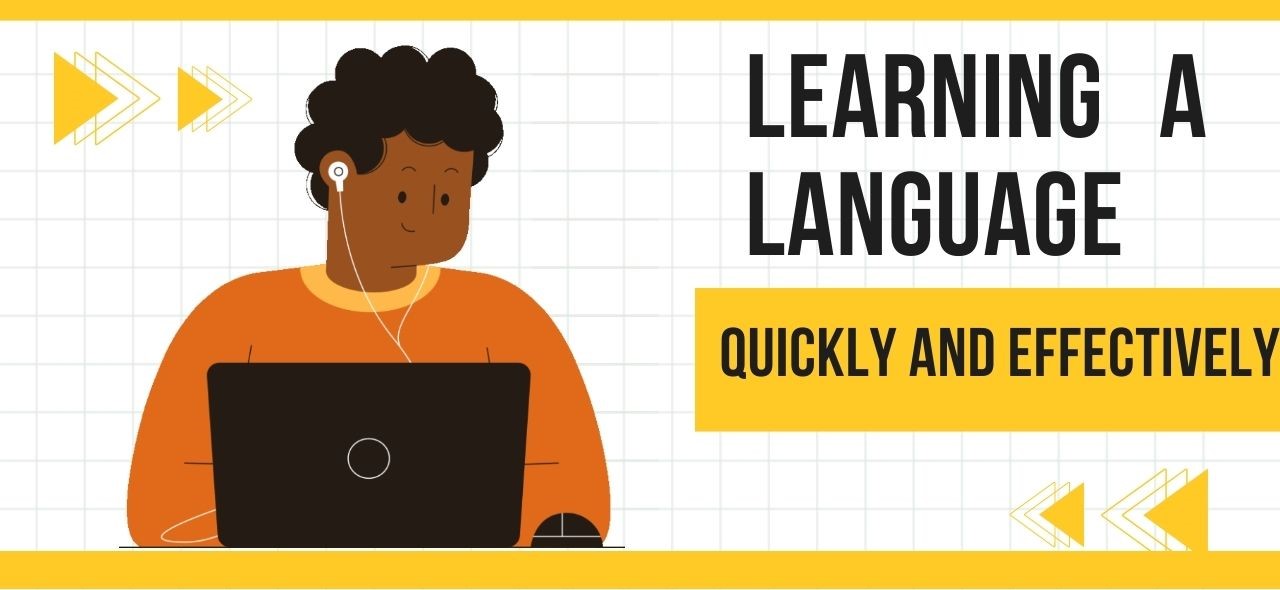
Secrets of How to Learn Languages Quickly and Effectively
It’s the new year! It’s the perfect time for us to sit around, analyze our past year, and see how we can make 2023 our year! In your yearly plans, you might want to think about learning a new language or try to perfect one that you already know, but you always start and then stop. You might have asked yourself, “How can I learn a language quickly?”
That’s a great question, and after doing our research we came up with the top secrets of how you can learn a language quickly yet effectively.
1. Immerse Yourself From The Beginning:
We often feel intimidated by the language at the start, especially if it’s very different from our native one. But, by immersing yourself in the language you allow yourself and your brain to get familiar with new sounds. You can do so by watching movies in that language, watching YouTube videos, listening to the radio, or even following social media accounts that speak your desired language. By doing so, you allow yourself to get a sense of how the language feels, how it is spoken, and how natives communicate.
2. Learn A Language That You Love:
How many of us needed to learn a language for a degree or a job but we didn’t have any interest in actually learning the language for pleasure? When we don’t like the language, we dread practicing it, and we gradually lack the motivation to learn it.
Motivation isn’t the master key, but when we love the language we want to learn, we feel excited to speak in it and know more about it.
What if you just don’t love it? Well, our advice would be to grow to love it! Learn more about the language, where it is spoken, and the culture behind those countries. If you need to know why you should learn a language in the first place, you can check our previous article, "5 Reasons Why Learning a Language Will Help You."
Photo by Tim Mossholder on Unsplash
3. Speak From The Beginning:
Don’t wait to be able to speak perfectly to start speaking, speak with what you have. If all you know is how to say “bonjour” or “buenos dias” then say them every day to all your friends and family.
When we practice speaking consistently and from the start, we get a little more comfortable with the language, which will show our confidence when speaking. If people don’t understand what you are saying, just translate it for them. This way, your mind will start to link the two sentences in the two languages, and you will be able to switch between them easily.
So our advice to you here's to not wait, just start with what you know!
4. Set Realistic Goals:
Every person who is trying to learn a new language wants to reach fluency, and that’s amazing. But do we need to reach fluency to have a conversation in that language?
The answer is no. According to the British Council, you can hold a conversation at the B2 level.
If you want to speak to natives, watch a movie without subtitles, or read books, you don’t have to study up to the 6th level.
So, our goal here is not to reach the highest level of fluency, we can set goals like “Have a conversation with a native”
Here’s a video by a polyglot who explains how to set realistic goals when learning a language:
5. Know The Difference Between Active Learning And Passive Learning:
Learning a language is a process that can be broken down into many activities and steps. Each activity is considered one of two things:
1. An active learning activity
2. Passive learning activity
When we sit in a classroom, listening to the teacher explain grammar rules, new words, and their meanings. We are engaged in a passive learning method. But when we speak those new words, do grammar exercises, listen to audio, process the information, and generate it in our own words, this is active learning.
Most people think the best way to learn is through passive learning, and that could not be more wrong. Active learning makes our brain do a lot of work, and all of this work could mean quicker results and higher retention rates.
Yet, we also know that active learning can be tough and can require more time than passive learning. We advise you to switch between them and focus more on active learning, but it won’t hurt to sit around watching a Youtube video in the language you are trying to learn.
Any practice is better than no practice!
6. Invest In A Good Course:
If you are looking to advance quickly in a language, especially if you need it for a job or a scholarship, consider investing in a good course. Group courses can give you the perfect opportunity to practice a language with other learners, learn from their mistakes, and make your own mistakes and learn from them.
Mango Gate offers language courses in more than 8 languages, with each language broken down into levels. Teachers are there to help you every step of the way, you can see our language courses here, or if you want to practice a language with a teacher one on one and want to focus on your weaknesses, we recommend you check our customized courses, where we curate the course contents to your needs.



